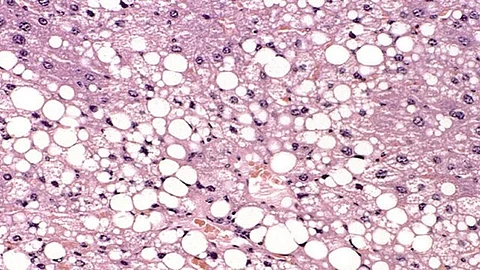Generally, it is said to show no symptoms in the early stages and if it is ignored with no treatment, it could result in more serious problems.
Reasons for getting fatty liver:
Sudden weight loss is associated with a crash diet and bariatric surgery can rapidly release the fat that is stored in the bloodstream
Dietary conditions include a diet rich in saturated fats, refined sugars, and processed foods
Obesity and metabolic syndrome: Excessive fat accumulation around the abdomen increases the chance of fat deposition in the liver. Obesity is considered to be a risk factor for fatty liver.
Genetics: It is important in determining the individual's susceptibility to fatty liver disease. Some individuals have genetic variations in them for the metabolism of fats and storage.
Alcohol consumption: Excessive alcohol consumption can lead to alcohol-fatty liver disease.
What is the mechanism behind the fatty liver?
The development of inflammation and progression is triggered by multiple stressors.
The factors that influence the progression of the condition include:
An increased load of lipids could result in inflammation, lipotoxicity, oxidative stress, and fibrosis.
High-calorie- rich diet, western lifestyle, and lack of physical exercise could lead to accumulation of fat around the abdomen region which could lead to fat accumulation within the healthy liver.
The dietary fats within the healthy liver are broken down to free fatty acids(FA), increased overload of free FA, uncoupling respiration from ATP production might cause the release of Reactive oxygen species(ROS) and MASH (Metabolic Dysfunction -Associated Steatohepatitis- defined liver inflammation and damage caused by the accumulation of fat in the liver).(1)
Diagnosis
Diagnosing a fatty liver involves a combination of medical history assessment, physical examination, blood tests, imaging tests, and, in some cases, liver biopsy.
1. Medical history and physical examination: Healthcare providers begin by taking complete medical history including information about lifestyle changes, alcohol consumption, and known risk factors.
2. Liver tests measure the liver enzymes including Alanine transaminase(ALT) and aspartate transaminase(AST)
3. Blood tests include complete blood count along with iron studies to know how much iron is present in blood and other cells. Tests for chronic viral hepatitis (hepatitis A, hepatitis C, and others), Celiac disease screening tests, Fasting blood sugar, and Hemoglobin A1C, help to identify how stable your blood sugar is, Lipid profile, to measure blood fats, such as cholesterol and triglycerides.(4)
4. Ultrasonography is considered to be the first imaging technique. This technique helps reveal the presence of fat in the liver.
5. Computed tomography(CT) and magnetic resonance imaging( MRI) offer detailed views of the liver and help assess the extent of liver damage and fibrosis in cirrhosis.
6. A liver biopsy is recommended to confirm the biopsy and assess the extent of liver damage. (2)


